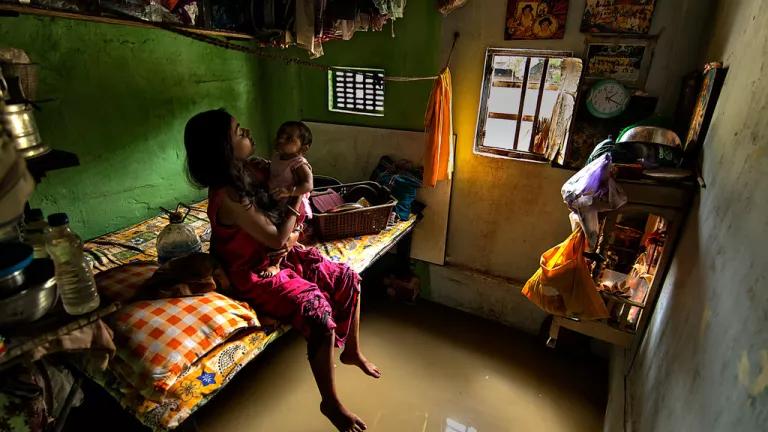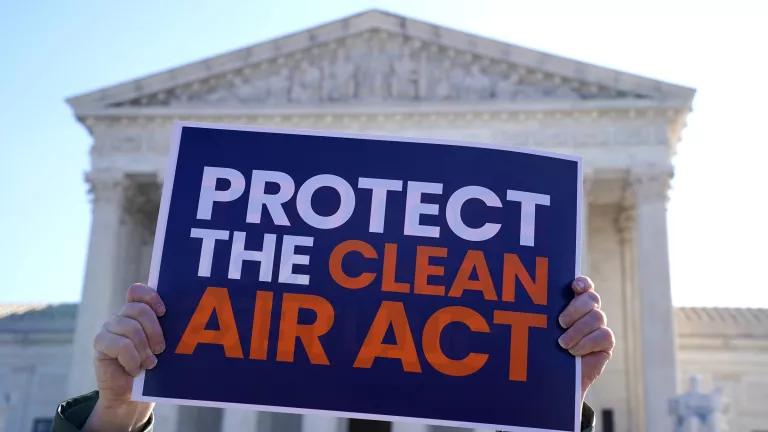COVID-19 and Climate Change: Creating the Political Will

Climate change can produce visible signs of distress and danger. Look at how the mountains of New Zealand appeared in January 2020 when they were obscured by sickly orange smoke from fires OVER A THOUSAND MILES AWAY in Australia. The fires were the worst the country had ever seen and endangered the health of millions of people who had to breathe the smoky air. Based on the recorded pollution levels and their statistical effects, a medical study estimated that 417 people died from smoke-related illnesses.
The fires are consequences of climate change that already has happened—not only in Australia but in the Western U.S. and elsewhere. Even more concerning are the consequences that are predicted but have not been seen yet. Infectious disease risks are likely to increase in a warming world as bacteria and viruses replicate more quickly, and disease-carrying pests move into new habitats and are active for more of the year. For example, nearly a billion people could be newly exposed to mosquito-borne illnesses such as Zika virus by 2080 under a worst-case scenario of warming.
Can we solve the problem of climate change before it is too late?
The answer to that is a clear and well-supported “YES”. Investing in clean energy can achieve the world’s goal of limiting climate change to 1.5 degrees C , protecting billions of people from the most frightening impacts of climate change. And it’s just what the world needs now in the face of economic contraction caused by the novel coronavirus and our response to it.
Investing in clean energy is a lot bigger than just spending $25 on a half dozen LED light bulbs (although efficient light bulbs are a good start). At least it is if we want to solve the climate problem. It will take community action, along with individual actions in the marketplace to make it happen.
Fortunately, we know how to do this.
So why haven’t we?
A big part of the answer is that the bold steps we need to take—steps that will cost trillions of dollars in America alone—are not considered politically feasible. Not even when the investments are justified by their savings in avoided health damages and on fuel bills. We should not, conventional wisdom tells us, expect support for large-scale policy programs—such as remodeling all of our buildings to cut their energy use in half—no matter how beneficial they are.
But maybe, just maybe, we have used the wrong method of judging political feasibility.
As recently as March 1, 2020 there were virtually no American policy responses to the COVID-19 crisis that people could notice in their everyday lives. We all went to work as normal, we attended NBA and college basketball games, shopped in large supermarkets, and crowded into subway trains and jammed parking lots, gathered by the dozens or hundreds or thousands at our places of worship, and enjoyed packed restaurants and bars without a second thought.
Is It Politically Feasible?
Would anyone—anyone—have thought it politically feasible that beginning within a few short weeks of March states could have banned all public gatherings, even of four people related to each other, closed restaurants, required so many people to work remotely, and shut down private businesses like bars, retail stores, and restaurants?
Who would have thought it politically feasible that both parties could enact economic relief bills of two trillion dollars? Recall that President Obama wanted to enact a stimulus about this large at the beginning of his administration but backed off for reasons of political infeasibility and had to settle for about $800 million. (There is no practical difference between the 2009 “stimulus” and the 2020 “relief”.)
We still need to invest additional trillions in economic recovery. Fortuitously, meeting the consensus science-based goal to limit climate change requires about the same amount of money in clean energy investments. We already have substantial pent-up demand for needed energy efficiency and accumulated need for infrastructure improvements. Rather than conventional recovery/stimulus, which merely compensates citizens and businesses for their losses, clean energy investment pays for itself in lower energy bills and greater resilience. Ordinary stimulus increases government debt, but clean energy investment makes money for the government (and even more for the investors). And done right, it could also address the great inequities that exist in our society. This fact should greatly increase the political feasibility of the programs that spur this investment.
Political feasibility can change overnight. Another time it changed, literally overnight, was December 6, 1941. That day, an overwhelming majority of Americans wanted us to stay out of World War II. The next day, after the early-morning attack on Pearl Harbor by Japan, President Franklin Roosevelt called for full-scale participation in the war and heard almost no dissent.
This time is different, because the outside world is unlikely to change suddenly: climate change happens slowly, but the science is pretty consistent with what we thought 40 years ago. This time, what must change suddenly is our response to the danger.
The response to COVID-19 shows that even with a science-denial presidential administration, major policy changes are possible: both Republican and Democratic governors took the drastic but necessary actions; and numerous businesses, local governments, and individuals are making changes—things that would have been utterly unimaginable politically just two weeks earlier. Shutting down professional sports. Closing all bars and restaurants. Telling people to stay at home for extended periods (2-3 weeks for sure but turning out to be for months). Sending most citizens a check for $1200 with no strings attached. (Many people, myself included, find this one-time response inadequate, but it is still a sea change for conservatives to vote for such policies.)
To be sure, some places in America are now backing off on health protection policies. But that is not a lesson for climate protection policies, because health protection measures exact a cost—in quality of life and in prosperity—whereas climate protection policies produce more jobs, profits, and better economic justice. And many places that had planned on reopening are now having second thoughts.
The pandemic response has even more encouraging news concerning climate: we have seen people reduce travel (and its associated emissions) by some 50 percent worldwide. This is far larger than any study I have ever seen on traffic reduction. While it may likely be temporary, the point is that this behavioral response is/was far larger than anyone would have expected based on previous experience. This contributes to an 8 percent global reduction in greenhouse gas pollution for 2020 projected by the International Energy Agency for 2020.
These reductions were not exclusively due to government policy. They were also a result of individual decisions, and business choices, to avoid the risk of infection. Could we count on similar, if smaller, behavior-based emissions reductions to minimize the risks of climate change?
New Reasons to Invest in Clean Energy
It’s beginning to look like political feasibility is a creature of circular logic: something is politically infeasible if we aren’t ready to do it. But if we just decide we ARE ready, then suddenly it IS feasible, and indeed inevitable.
There are powerful reasons why our appetite for doing something serious to stop climate change should be stronger now. America and the world are moving toward a low-employment future unless we do something about it. We still need to spend trillions of dollars more [scroll down to 'This is Europe's moment' in the link] to mitigate the damages. If we spent that money in a targeted way, targeted to reduce emissions while increasing comfort, convenience, health, and productivity, we could so much better—better for jobs, better for economic growth, and better for the environment.
The American clean energy economy produced over 3.5 million jobs before the recent disruptions. If we expanded it rapidly as soon as it is safe we would do even better—millions of new jobs. And they would be jobs that are located where people already live. (Making buildings more energy efficient requires workers to be at the building, in the region where they already work, or used to, and uses products mainly produced within a day’s truck drive.)
Unlike COVID-19, where the damage can be limited if we act quickly as soon as we see the problem, with climate change by the time we SEE the problem it is too late to turn it back. All we can do is limit the growth of damage. Two years from now, it is possible that no one will die from COVID-19. But two years from now, the climate problem will be worse.
Is now the right time to talk about climate in the same blog as COVID-19?
The response is “certainly, yes”, because climate change is also a health problem. The current pandemic warns us that we have to do more not only to overcome COVID-19 but also to prevent similar (or even worse) problems in the future.
Along with COVID-19 and the climate crisis, many are now paying increased attention to the issue of racial injustice. Acting on climate will reduce some of the problems faced by America’s under-resourced communities, many of which are home to polluting power plants and other energy infrastructure that generates harmful emissions.



